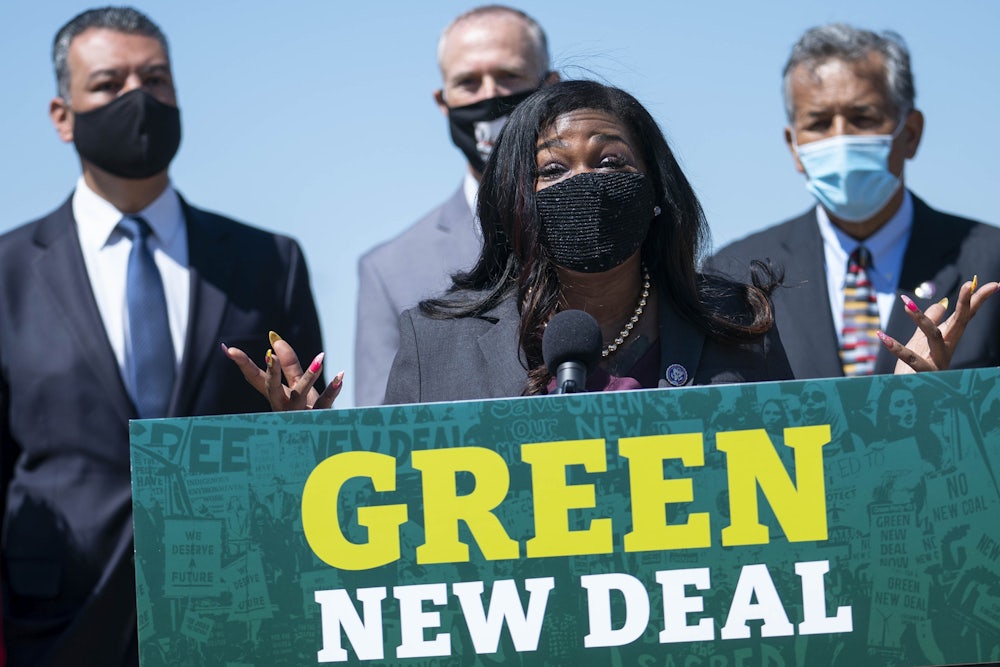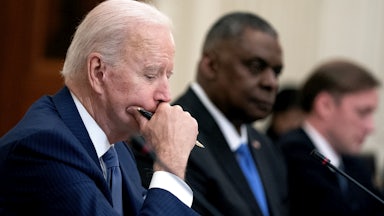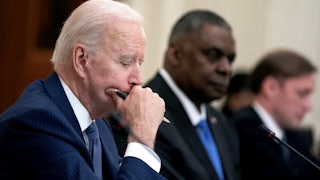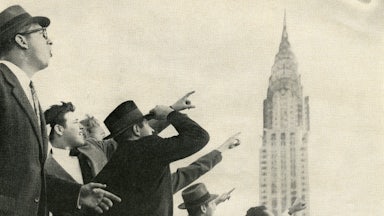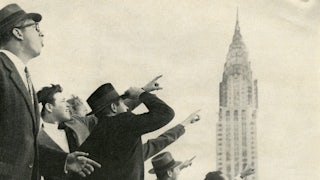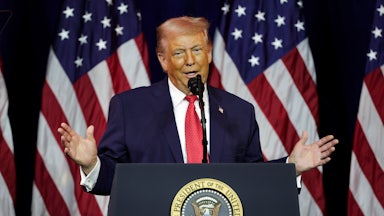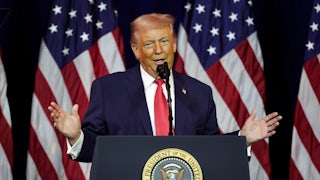One day at work, well before being elected to Congress, Cori Bush got a call from her godmother. “She had a dream my house burned down,” Bush recalled to me over the phone. Her godmother urged her to go make sure everything was alright.
When Bush got home after work and picking up her kids, she looked around and didn’t see anything out of order. Then she checked the outlet behind her daughter’s bed. Plugged into it was one of the three electric space heaters she was using to heat the house. Juggling utility bills, Bush had opted to let the gas get turned off to make rent and keep the lights on. When she pulled back the bed, Bush says, “fire shot out of the outlet.” If not for her godmother’s premonition, she wouldn’t have checked the outlet and her daughter could have gotten trapped in the flames.
Bush, now a U.S. representative for Missouri, is introducing a new resolution on Thursday with Representative Jamaal Bowman of New York to help prevent similar situations across the country. The resolution aims, according to the 12-page text, to establish “access to electricity as a human right and eradicate the reliance on monopolized, profit-driven utility corporations and providers and the flawed regulatory regime that has failed to regulate these utilities in the public interest.”
Public power through entities like electric cooperatives and municipal utilities already serves about one-third of retail electricity customers. “Certain segments of our economy—like water, health care, and energy—are so absolutely essential to people’s lives that we cannot allow profit motives to dictate decision-making,” Bowman said over email. “And as long as energy is treated as a commodity like any other, poor people, workers, and communities of color will suffer.”
The dilemma Bush faced back then—choosing which utility bills to pay—is common. In 2019, a study by Action St. Louis and several other local groups found that 52 percent of low-income residents of St. Louis and 48 percent of the city’s Black residents face energy burdens that are more than twice the citywide median. Nationally, Black, Hispanic, and Native American households spend 43 percent, 20 percent, and 45 percent more of their income on energy bills, respectively, than non-Hispanic white households.
Back when Bush was living in North St. Louis, her investor-owned electric utility put her on a “Budget Billing” plan, where high bills some months were meant to lower costs in others. Sure that an $1,800 bill must have been a mistake, she called customer service to sort out the problem. It wasn’t a mistake, though, and she had to move out.
The new resolution—co-sponsored by Representatives Alexandria Ocasio-Cortez, Rashida Tlaib, Mondaire Jones, Ayanna Pressley, Ilhan Omar, Marie Newman, and Raúl Grijalva—calls out the “fundamental conflict when shareholder gains determine the prices and accessibility of fundamental public goods,” and outlines several suggestions to scale up public and community-owned clean power while fighting energy poverty. It sets goals to expand job-creating weatherization and energy efficiency programs and guarantee that public renewables are built by local, ideally union workers making prevailing wages.
Bush and Bowman’s measure builds on multiyear campaigns by the Democratic Socialists of America, whose chapters have pushed for public power in Chicago, Providence, and the Bay Area, among other cities. In New York, DSA and allied elected officials—including Bowman—are backing a bill in the state legislature called the Build Public Renewables Act, which would empower the state-run New York Power Authority to become “the sole provider of energy to all state-owned and municipal properties” by 2025. The congressional resolution has support from DSA, the Center for Biological Diversity, the Gulf Coast Center for Law and Policy, Native Organizers Alliance, the Sunrise Movement, and a number of other climate and community organizing groups that have long advocated for public power.
More ambitious still is the resolution’s call eventually to transition off for-profit utilities entirely. The federal government would acquire them before transferring ownership over to state, local, and tribal governments, “or other appropriate scales of public ownership.” Alternatively it could use public funds to convert them to community or cooperative ownership. The resolution also suggests asserting “Federal control and ownership” over transmission lines, and giving today’s fossil fuel workers a seat at the table in deciding what an energy transition should look like.
Backing the measure, as well, is the union representing workers at the Puerto Rico Electric Power Authority, which is engaged in a long-running fight against austerity and the costly privatization of the island’s beleaguered public utility. Union president Angel Figueroa Jaramillo said in an emailed statement that handing the utility over to private contractor LUMA Energy “threatens the jobs and pensions of thousands of union workers and threatens to undermine Puerto Rico’s transition to an affordable, reliable, 100 percent renewable energy-based electrical grid.”
The public power demands now made by Green New Deal advocates have deep roots in that framework’s namesake. In 1932, in the wake of the implosion of a massive utility holding company empire serving 32 states, Franklin D. Roosevelt campaigned on allowing investor-owned utilities to be brought under public ownership. As he told a crowd in Oregon just a month before the election, “where a community—a city or county or a district—is not satisfied with the service rendered or the rates charged by the private utility, it has the undeniable basic right, as one of its functions of government … to set up, after a fair referendum to its voters has been had, its own governmentally owned and operated service.” Amid fierce opposition from energy barons, the New Deal brought power to most of the 90 percent of farms and rural homes that lacked electricity in the lead-up to the Great Depression, via the Tennessee Valley Authority and the Rural Electrification Administration.
Hearkening back to that New Deal legacy, Bush and Bowman’s resolution looks not only to expand public power to democratize existing public power infrastructure further. While it could be a powerful engine for clean energy development, existing public power has suffered from decades of disinvestment and, the resolution text notes, “serious yet resolvable” governance challenges. The resolution proposes structuring public utilities for greater public accountability, including an Energy Department–run process to bring public input, transparency, and accountability to the TVA and Power Marketing Administration.
“We built this model back in the early 1900s and basically haven’t revisited it since. Now energy is core to everything we do as human beings living and working in the twenty-first century, and it just doesn’t make sense to allow this broken, outdated system to exist,” Bowman told me. “We need a new model, rooted in racial and economic justice. And now is the time to begin this conversation, as we begin to build back better and invest in infrastructure across the country.” At the moment, the Biden administration is immersed in negotiations with Senate Republicans over passing the president’s proposed infrastructure package. That includes some environmental and social justice aims but does little to overhaul the deeper challenges that plague the nation’s sprawling and outdated energy system.
Public utilities and coops were left out of the bargain struck at the turn of the century between private utilities and reformers. In exchange for monopolies over their service areas, investor-owned electric companies agreed to be regulated by state-level public service commissions tasked with approving rate hikes and ensuring reliable service. Regulatory capture quickly became baked into the business models of the private utilities, while many public utilities—exempted from most oversight—devolved into old boys’ networks with little incentive for change. In recent years, member-owners of electric cooperatives have fought to democratize them and bring fresh blood onto coop boards that seldom hold public meetings.
The resolution is also positioned as a response to climate change. In addition to attempting to provide affordable electricity and weatherization—making homes easier to cool and heat—it proposes setting a target for existing public power systems to reach 100 percent renewable energy by 2030. It further calls for forgiving the debts that keep many electric coops, in particular, hooked on coal. The resolution explicitly mentions the role investor-owned utilities have played in exacerbating extreme weather events in Texas and California, noting the challenge today’s energy system poses for dealing with the effects of climate change, too.
It posits public ownership as a route toward more stringent oversight and public participation in clean energy procurement and deployment, and a more direct way to bring relief to the communities of color worst hit by energy poverty. Building public renewables, the resolution text contends, could be a way to establish “high-road labor standards” in the clean energy sector rather than simply outsourcing contracts for wind and solar to largely nonunion, third party developers, as is now common. “We could make clear decisions about how fast we’re moving on projects, and about where we are investing to repair past harms,” the Next System Project’s Johanna Bozuwa, who consulted on the bill, told me by phone. “It allows us to build a much more equitable renewable energy transition and has the potential to be much faster, too.”
Public ownership, Bozuwa and other advocates argue, would also be a means of ending investor-owned utilities’ stranglehold over politics. As researchers at the Energy and Policy Institute have documented, private power providers have engaged in many of the same climate denial tactics as coal, oil, and gas companies. Their influence is particularly noxious at the state level, where companies like Dominion Energy in Virginia and FirstEnergy, in Ohio, are a ubiquitous presence in state legislatures, using ratepayer money to block climate measures and pro-renewables policy. “When someone’s trying to win election or reelection, and a company is offering $5,000, that can be a hard thing for people to turn down,” Bush said. “What we are trying to do here is break through the iron grip they’ve had.… We have not taken money from these corporations. We are not accountable to them.”
Existing proposals to transform the electric grid largely rely on creating new incentives for investor-owned utilities, including through a proposed Clean Energy Standard. Some of these incentives—like renewable energy tax credits—exclude public utilities from taking advantage, since only for-profit companies have the requisite amount of tax liability. Those now rallying around public power are looking to make sure that clean electricity is a right built with the public interest in mind, not a luxury doled out for the benefit of shareholders.
With co-sponsors spanning the Squad, the public power resolution reflects a guiding vision for a Green New Deal, in contrast to the more tepid proposals being bandied around infrastructure debates. It also helps chip away at an idea that private utilities have spent more than a century trying to promulgate: that providing electricity is something that can make people rich. “After the last 40 years of Reaganomics,” Bush said, “we need a strong public sphere. We want publicly owned goods that will last.”
